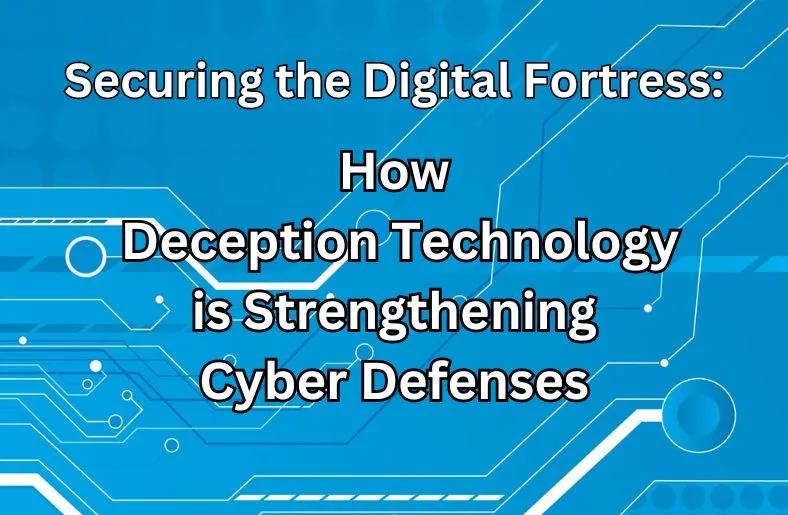What Is Deception Technology?
In today’s cybersecurity landscape, the sophistication of cyber threats necessitates the adoption of innovative defense mechanisms. One such measure is deception technology. This approach utilizes an array of traps and decoys designed to mislead and delay cyber attackers, giving security teams valuable time to neutralize threats before they cause significant damage. Organizations can protect their critical resources by creating an environment fraught with misleading information and fake assets. Deception technology aims to deceive cyber adversaries by setting up decoy servers, files, and credentials that mimic the organization’s IT assets. These decoys are engineered to appear wholly legitimate, luring attackers into a trap where they waste valuable time and resources. This method protects tangible assets and gathers critical intelligence on the attackers’ behavior, techniques, and objectives, allowing organizations to fortify their defenses more effectively.
How Deception Technology Works in Cybersecurity
Deception technology functions by deploying many decoy assets across the network, seamlessly blending them with the genuine Information Technology environment. These decoys are strategically placed to entice cyber attackers, making them indistinguishable from natural resources. When an attacker interacts with one of these fake assets, security teams receive an instant alert, allowing them to analyze the attack and respond appropriately. This alert mechanism is often part of a broader security strategy, including firewalls, antivirus software, and intrusion detection systems. One widely recognized technique is the use of honeypots. Honeypots are decoy systems designed to appear as enticing targets to potential attackers. They can range from simple decoys with basic interaction capabilities to complex systems that offer extensive engagement options. Organizations can gather invaluable data on their methods and tools by tricking attackers into interacting with these fake systems, enhancing their overall cybersecurity posture. This information enables continuous improvement in threat defense strategies and a better understanding of emerging cyber threats.
Other components of deception technology include fake data, counterfeit credentials, and decoy networks. Collectively, these elements create a labyrinth that confounds attackers while providing security teams with deep insights into attack patterns and behaviors. By monitoring these interactions, organizations can develop more effective countermeasures and enhance their ability to detect and mitigate potential threats in real-time.
Advantages of Deception Technology
- Enhanced Detection: Deception technology can identify and neutralize threats that might bypass other security systems. Capturing attackers’ attention with decoys allows for the early detection of malicious activities before they infiltrate critical assets.
- Reduced Dwell Time: Trapping attackers within deceptive environments significantly reduces their time in the network, mitigating potential damage they can cause. This reduction in dwell time is crucial for preserving the integrity of sensitive data and maintaining operational continuity.
- Actionable Intelligence: Every encounter with a decoy offers essential information on cyber enemies’ strategies, methods, and processes. This intelligence is critical for refining security protocols, updating threat models, and improving incident response strategies. The data gathered can also help predict future attack vectors and prepare appropriate defenses.
Additionally, deception technology provides an added layer of psychological deterrence. Knowing that an organization employs advanced deception techniques can discourage attackers from targeting them, as the risk of being detected and trapped is significantly higher. This psychological aspect can be as impactful as the technical defense mechanisms, contributing to a comprehensive cybersecurity strategy.
Real-Life Examples of Deception Technology
Numerous organizations across diverse industries have successfully integrated deception technology into their cybersecurity frameworks to bolster their defenses. For example, financial institutions, prime targets for cybercriminals seeking monetary gain, have adopted deception techniques to protect transaction data. Setting up fake accounts and credentials diverts attackers away from genuine data, thus reducing the risk of fraudulent activities. These counterfeit accounts have realistic balances and transaction histories, making them indistinguishable and luring attackers into futile efforts. Government agencies also utilize deception technology to shield critical infrastructure from cyber espionage and attacks. By implementing false communication networks and bogus data stores, they can trap and monitor potential threats, ensuring the security of sensitive information. These measures are part of a broader strategy to protect national security assets and critical infrastructure from domestic and international threats.
Healthcare institutions, which handle vast amounts of sensitive patient data, are another sector that benefits from deception technology. Hospitals and healthcare providers deploy decoy systems to safeguard accurate medical records and patient information. By creating fake medical records and decoying patient information systems, they can effectively mislead cybercriminals, ensuring that genuine data remains untouched. These real-life applications highlight the versatility and effectiveness of deception strategies in various high-stakes sectors.
Future Trends in Deception Technology
As the threat landscape evolves, so must the technologies designed to counteract these threats. The future of deception technology lies in greater sophistication, with AI-driven traps that can dynamically adapt to emerging cyber-attack methods. These AI-enhanced decoys will exhibit increasingly realistic behaviors, making it harder for attackers to distinguish them from actual assets. This advancement will significantly bolster the effectiveness of existing cybersecurity measures.
Moreover, integrating deception technology with other defensive systems promises to create a more robust and comprehensive security framework. Combining deception with traditional security tools like firewalls, Tinrent intrusion detection systems, and antivirus software will form a multi-layered defense strategy. This extensive method guarantees that if one layer is penetrated, other layers will still be in place to safeguard essential assets.
In summary, deception technology represents a pivotal evolution in cybersecurity. Misleading and trapping cyber adversaries provides organizations with a proactive tool to deter threats, gather actionable intelligence, and strengthen their security posture. As this technology advances, its adoption across various industries will likely increase, fortifying global cyber defenses and preparing organizations for future challenges. Investing in deception technology will help organizations stay ahead of cybercriminals, protecting their digital assets in a hostile cyber environment





